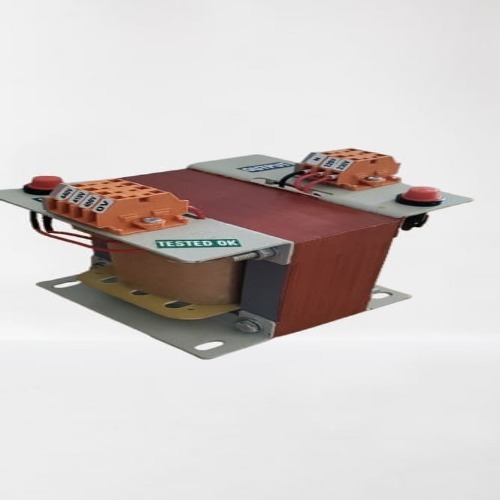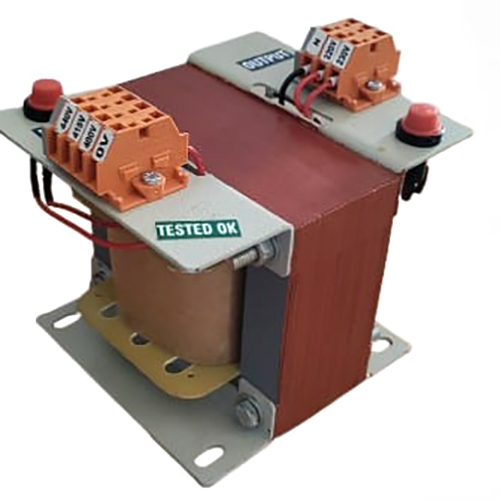Talk to us
CONTROL TRANSFORMERS
1850 INR/Number
Product Details:
- Coil Material Iron Core
- Voltage Booster Type Dry
- High Voltage 12 volts, 24 volts, 48 volts, Volt (V)
- Product Type Toroidal Power Transformer
- Phase Single Phase
- Coil Structure Isolation
- Coil Number Autotransformer
- Click to View more
X
CONTROL TRANSFORMERS Price And Quantity
- 1 Number
- 1850 INR/Number
CONTROL TRANSFORMERS Product Specifications
- Iron Core
- Autotransformer
- Single Phase
- Isolation
- Toroidal Power Transformer
- 12 volts, 24 volts, 48 volts, Volt (V)
- Dry
CONTROL TRANSFORMERS Trade Information
- Cash Advance (CA) Cash in Advance (CID)
- 30 Number Per Month
- 2-7 Days
- South India
Product Description
CONTROL TRANSFORMER SPECIFICATION DESCRIPTION Transformer Type A control transformer is a single phase transformer used to provide a stable voltage to control circuits in machines and electrical panels. It is designed to handle short-time overloads and maintain voltage during inrush conditions from contactors and relays. Power Rating The power rating is measured in volt amperes or VA. Common ratings include 10 VA, 25 VA, 50 VA, 100 VA, and higher. The rating is selected based on the total power needed by the control circuit. Primary Voltage This is the input voltage supplied to the transformer. Common primary voltages include 110 volts, 220 volts, 230 volts, 400 volts, and 415 volts alternating current. Secondary Voltage This is the output voltage delivered to the control circuit. Typical values are 12 volts, 24 volts, 48 volts, or 110 volts alternating current. Frequency Most control transformers are designed to operate at 50 hertz or 60 hertz. Many support both frequencies. Insulation Class Indicates the temperature resistance of the winding insulation. Common classes include Class B rated for 130 degrees Celsius and Class F rated for 155 degrees Celsius. Short Time Overload Capacity Control transformers are built to handle high inrush currents during the initial operation of contactors or relays. This feature helps prevent voltage drop. Cooling Type Typically dry type, naturally air cooled without fans. Suitable for enclosed panel installations. Mounting Type Can be mounted on a panel base plate or on a DIN rail depending on the design. The mounting method is selected based on space and installation preferences. Enclosure Type Transformers can be open type for use inside electrical panels or enclosed type with protection such as IP20 or higher for external use. Grounding Secondary winding may be grounded based on safety and application needs. Standards and Compliance Designed according to standards like IEC 61558 or UL and CE certified for industrial and commercial use.Tell us about your requirement

Price:
Quantity
Select Unit
- 50
- 100
- 200
- 250
- 500
- 1000+
Additional detail
Mobile number
Email






